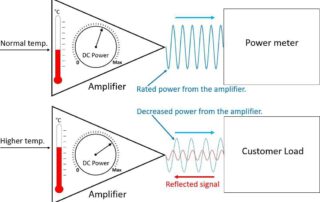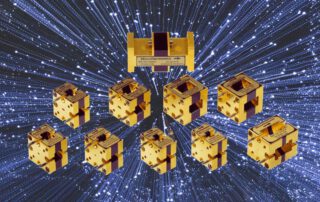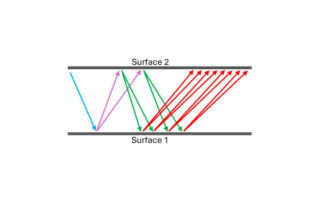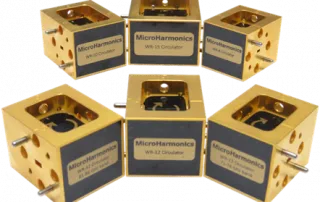Do mm-Wave Power Amplifiers Need Isolators?
Do mm-Wave Power Amplifiers Need Isolators? The answer to the question is often yes. It is common to see a mm-wave power amplifier with an isolator attached to the output port. The reason may have less to do with the impedance matching of the amplifier and more with the impedance matching of the load. The amplifier may perform well when connected to a well-matched load [...]
Radiation Testing of Micro Harmonics Isolators
Radiation Testing of Micro Harmonics Isolators Space exploration has always pushed the boundaries of technology, requiring instruments that can withstand the harsh conditions beyond Earth’s atmosphere. One of the critical factors that must be considered when designing space-based instruments, such as isolators, is their ability to endure the effects of radiation, particularly the Total Ionizing Dose (TID). What is Total Ionizing Dose (TID)? TID is [...]
Multipaction Analysis for Millimeter-Wave Isolators and Hybrid Circulators
Multipaction Analysis for Millimeter-Wave Isolators and Hybrid Circulators Multipaction [1, 2] is a phenomenon occurring primarily in RF systems operating in a vacuum such as those found on space-based platforms. RF fields accelerate charged particles (electrons) which gain energy and collide with surfaces. If the impact energy is sufficient, additional electrons are released from the surface. The newly released electrons can, in turn, be accelerated [...]
Why Are Y-Junction Circulators Difficult to Find Above 100 Ghz
Why Are Y-Junction Circulators Difficult to Find Above 100 GHz Y-junction circulators are used to direct signal flow in millimeter-wave (MMW) transmit and receive systems. At the heart of the device is a ferrite core located at the junction of three waveguides. The magnetically biased ferrite is non-reciprocal which gives rise to the unique circulator behavior. Commercial circulators with full waveguide band operation are available [...]
Fullband MM-Wave Circulators Are on the Horizon
Fullband mm-Wave Circulators Are on the Horizon Diving into Revolutionary Circulator Developments Circulators are useful in transmit/receive systems, isolating a transmitter from a receiver while allowing them to share a common antenna. For more than 50 years the Y-junction circulator has been the primary implementation at mm-wave frequencies. Commercial Y-junction circulators with full waveguide band operation are available up to 40 GHz, although the isolation [...]
Revolutionizing MMW Systems: The Crucial Role of Cryogenic Isolators
Revolutionizing MMW Systems: The Crucial Role of Cryogenic Isolators Millimeter wave engineers operate in a part of the electromagnetic spectrum where there are some significant challenges to overcome. It is difficult to generate signal power, the available components are costly and sometimes don’t work well, and often the components just don’t exist at these frequencies. In fields such as radio astronomy, designers must go to [...]






